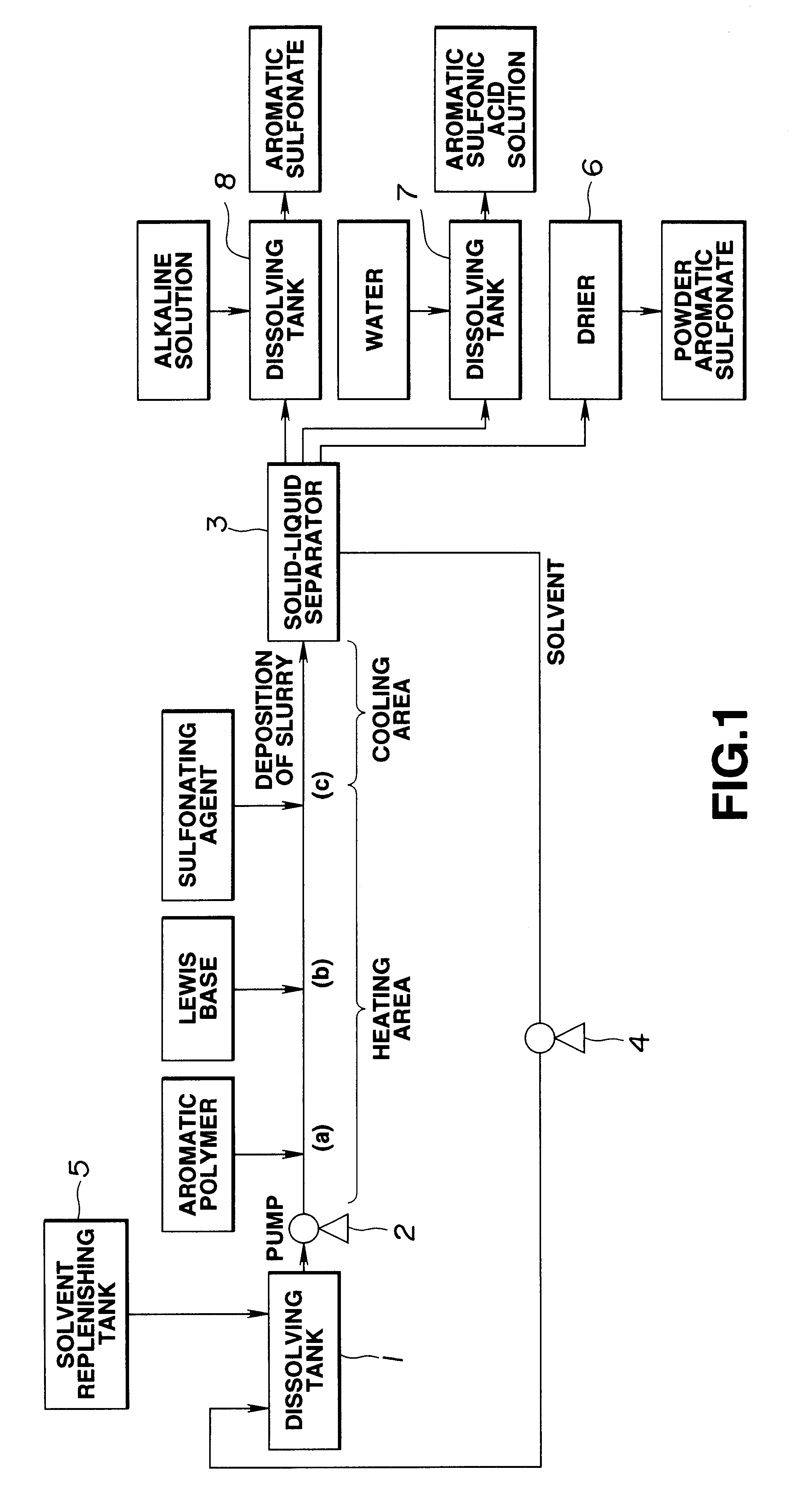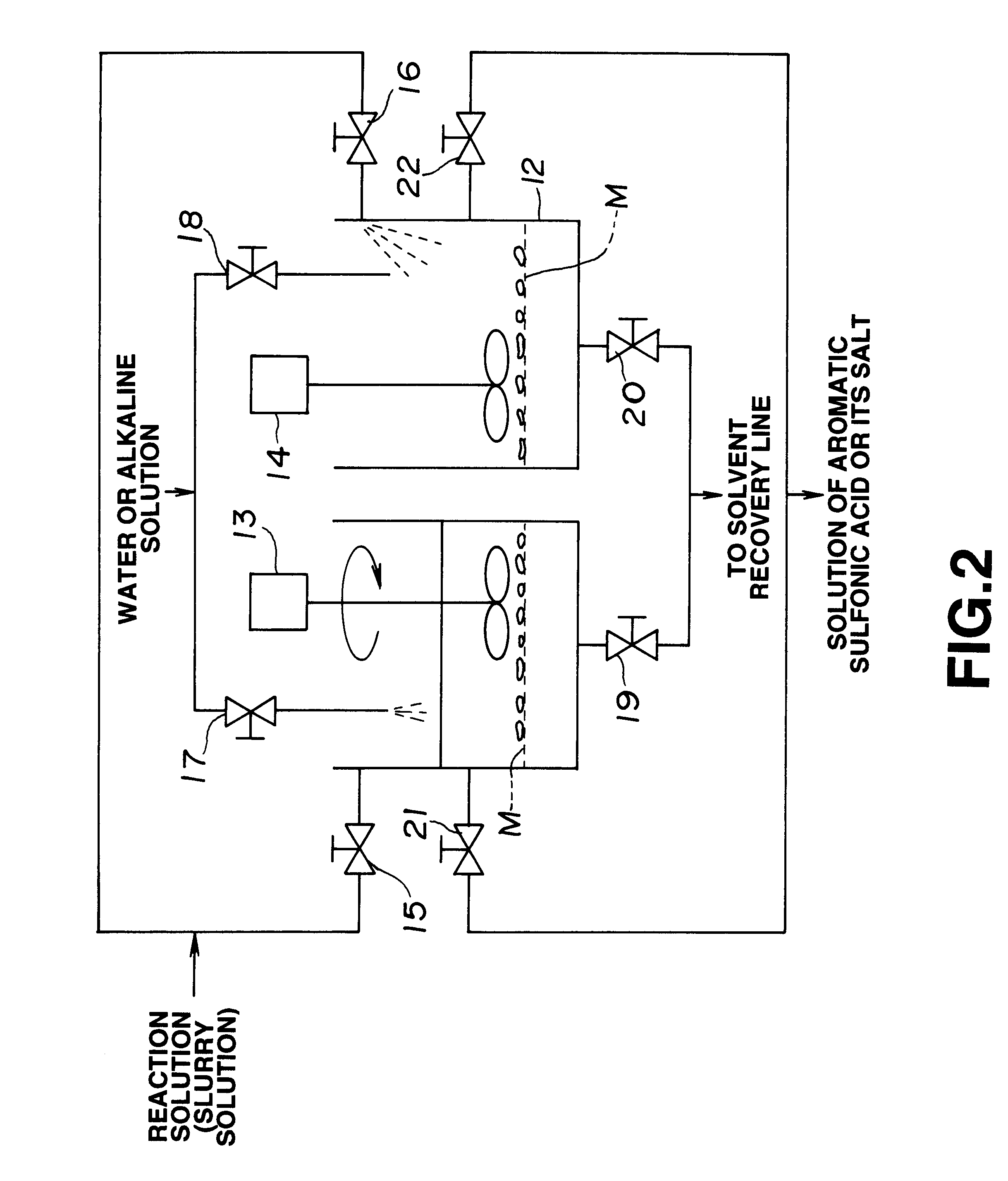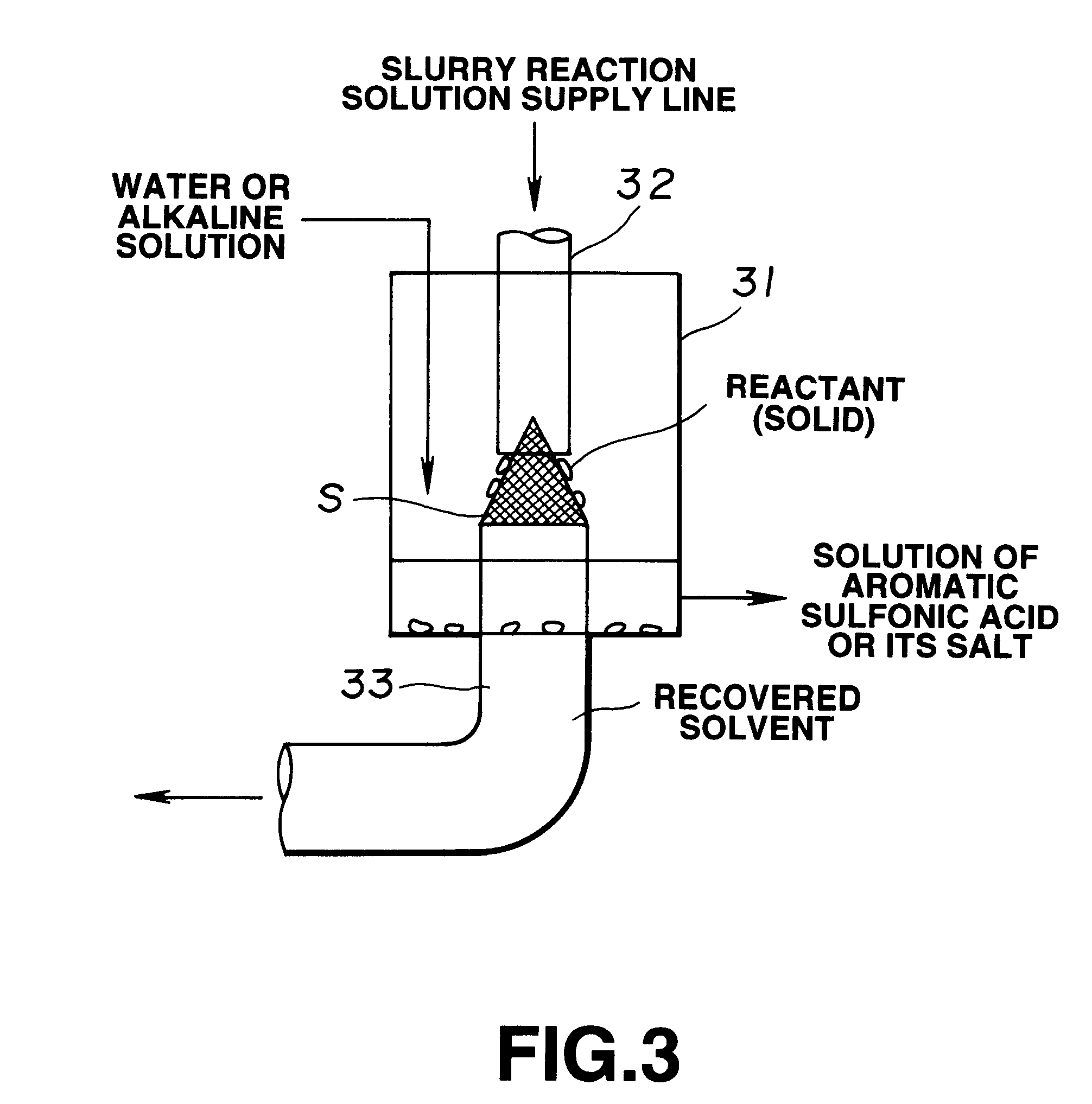Method of manufacturing polyelectrolyte from styrene polymers
a technology of styrene polymer and manufacturing method, which is applied in the direction of non-metal conductors, etc., can solve the problems of inability to save resources, inability to reduce waste, and difficulty in realizing the actual process of refining polystyrene resin into a polyelectrolyte, so as to prevent the discharge of a large quantity of toxic was
- Summary
- Abstract
- Description
- Claims
- Application Information
AI Technical Summary
Benefits of technology
Problems solved by technology
Method used
Image
Examples
example 1
The temperature of solution prepared by adding 0.3 g of triethyl phosphate to 70 g of cyclohexane was maintained at 50.degree. C., and then 0.14 g of sulfuric anhydride was added. Then, solution prepared by dissolving 3.5 g polystyrene (a) in 66.5 g cyclohexane in a hot state of 50.degree. C. and 2.7 g of sulfuric anhydride were simultaneously dropped to the above-mentioned solution in 60 minutes in a state where the temperature was maintained at 50.degree. C. Then, the sulfonating reaction was performed for one hour in a state where the temperature was maintained at 50.+-.2.degree. C.
As the reaction proceeded, slurry products were generated in the reaction solution.
Then, 15 g of water solution including 1.5 g of sodium hydroxide was gradually added to the reaction system so that the reaction system was neutralized. Then, the reaction system was heated so that cyclohexane in the reaction system was removed by distillation. Finally, the pH of the water solution of the residue was adj...
example 2
Similarly to Example 1, sulfonation reactions, a neutralizing process and removal of a solvent were performed except for a polystyrene-polydimethylphenyleneether alloy (b) being, as the polymer, used in place of polystyrene (a) and methylcyclopentane being used as the solvent in place of cyclohexane. Thus, 30 wt % water solution of the polyelectrolyte was obtained which was called sample water solution according to Example 2.
Although methylcyclopentane was allowed to remain by 45 ppm in the thus-obtained sample water solution according to Example 2, no halogen compound, as a matter of course, was detected.
example 3
The temperature of solution prepared by adding 0.92 g of triethyl phosphate to 50 g of cyclohexane was maintained at 50.degree. C., and then 0.17 g of fuming sulfuric acid (containing SO.sub.3 by 60 wt %) was added. Then, solution prepared by dissolving 2.4 g of high impact polystyrene (c) in 120 g of cyclohexane and 3.3 g of fuming sulfuric acid were simultaneously dropped to the above-mentioned solution in 30 minutes. Then, the temperature of the solution was maintained at 50.+-.2.degree. C., and then the sulfonation was performed.
Then, 21 g of water solution including 2.1 g of sodium hydroxide was gradually added such that the reaction system was stirred so that the reaction system was neutralized. Then, the reaction system was heated so that cyclohexane in the reaction system was removed by distillation. Finally, the pH of the water solution of the residue was adjusted to 8 by using sodium hydroxide. As a result, 20 wt % water solution of polyelectrolyte was obtained which was c...
PUM
| Property | Measurement | Unit |
|---|---|---|
| Fraction | aaaaa | aaaaa |
| Fraction | aaaaa | aaaaa |
| Fraction | aaaaa | aaaaa |
Abstract
Description
Claims
Application Information
 Login to View More
Login to View More - R&D
- Intellectual Property
- Life Sciences
- Materials
- Tech Scout
- Unparalleled Data Quality
- Higher Quality Content
- 60% Fewer Hallucinations
Browse by: Latest US Patents, China's latest patents, Technical Efficacy Thesaurus, Application Domain, Technology Topic, Popular Technical Reports.
© 2025 PatSnap. All rights reserved.Legal|Privacy policy|Modern Slavery Act Transparency Statement|Sitemap|About US| Contact US: help@patsnap.com



